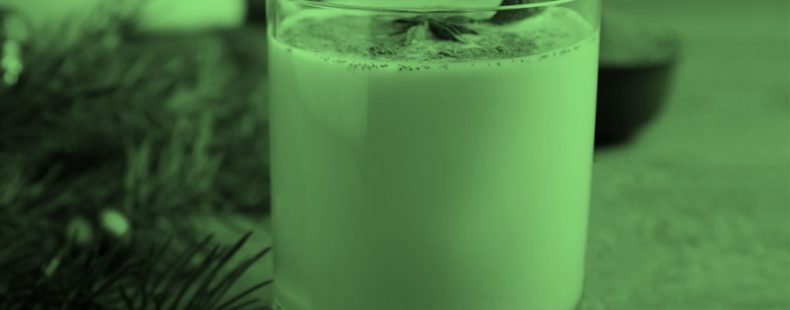What’s eggnog?
Frothy, creamy eggnog is a festive favorite in England, Canada, and America that is often enjoyed during the holiday season. This winter drink consists of milk, cream, sugar, whipped egg whites, and egg yolks. There are many versions of the drink, using alcohols like rum, brandy, whiskey, and bourbon. And, it often is flavored with everything from molasses to cinnamon to nutmeg to dried pumpkin. Now, there’s even soynog or nutnog, a version of the drink made for vegans or lactose-intolerant people. Eggnog for all!
How do you make eggnog?
While eggnog is available in most grocery stores, most people love to make their own homemade eggnog. Traditional eggnog uses raw eggs, but many people prefer to cook the eggs to avoid making a risky concoction.
Typically, the egg whites and yolk are separated into two bowls. The egg yolks are mixed together with the other main ingredients, which could include sugar, salt, heavy cream or whipped cream, milk or coconut milk, and maybe an alcoholic beverage.
Finally, each bowl is thoroughly mixed until they have a fluffy texture, when they are combined together. The final mixture is then chilled or refrigerated until it is served, at which point it might be topped with something like cinnamon or nutmeg.
Where did eggnog come from?
While the word eggnog isn’t recorded until the mid-1700s in American English, the drink may be based on something called posset. Posset is an old medieval British drink made with hot milk that was curdled with wine or ale, and sometimes eggs were added to the recipe. Fun fact: posset was also a cold and flu remedy in the middle ages.
And, just like posset inspired eggnog, eggnog seems to have inspired some other winter drinks, too. Take the Tom and Jerry, a regional staple for many Midwestern Christmas celebrations. This holiday drink consists of rum, warm water or milk, beaten eggs, spices, and sugar. Would eggnog by any other name taste as sweet? … We think so! (Check out more of the weirdest cocktail names here!)
What’s the nog all about?
The egg in eggnog is clear enough: the drink is made with egg. But what about nog? Nog, itself a term for eggnog, also historically referred to a kind of strong ale in parts of England. The origin of nog is unclear, but it could be related to noggin, a name for a drinking vessel dating back to the 1500s.
And this noggin may be the origin of noggin as a colloquial term for “head” (based because heads resembled mugs), as in “Don’t bump your noggin after drinking too much eggnog!” Noggin, for “head,” is first recorded in late 1700s boxing slang.
All these explanations aside, what is clear is that … even the simplest pleasures still contain a bit of mystery.














